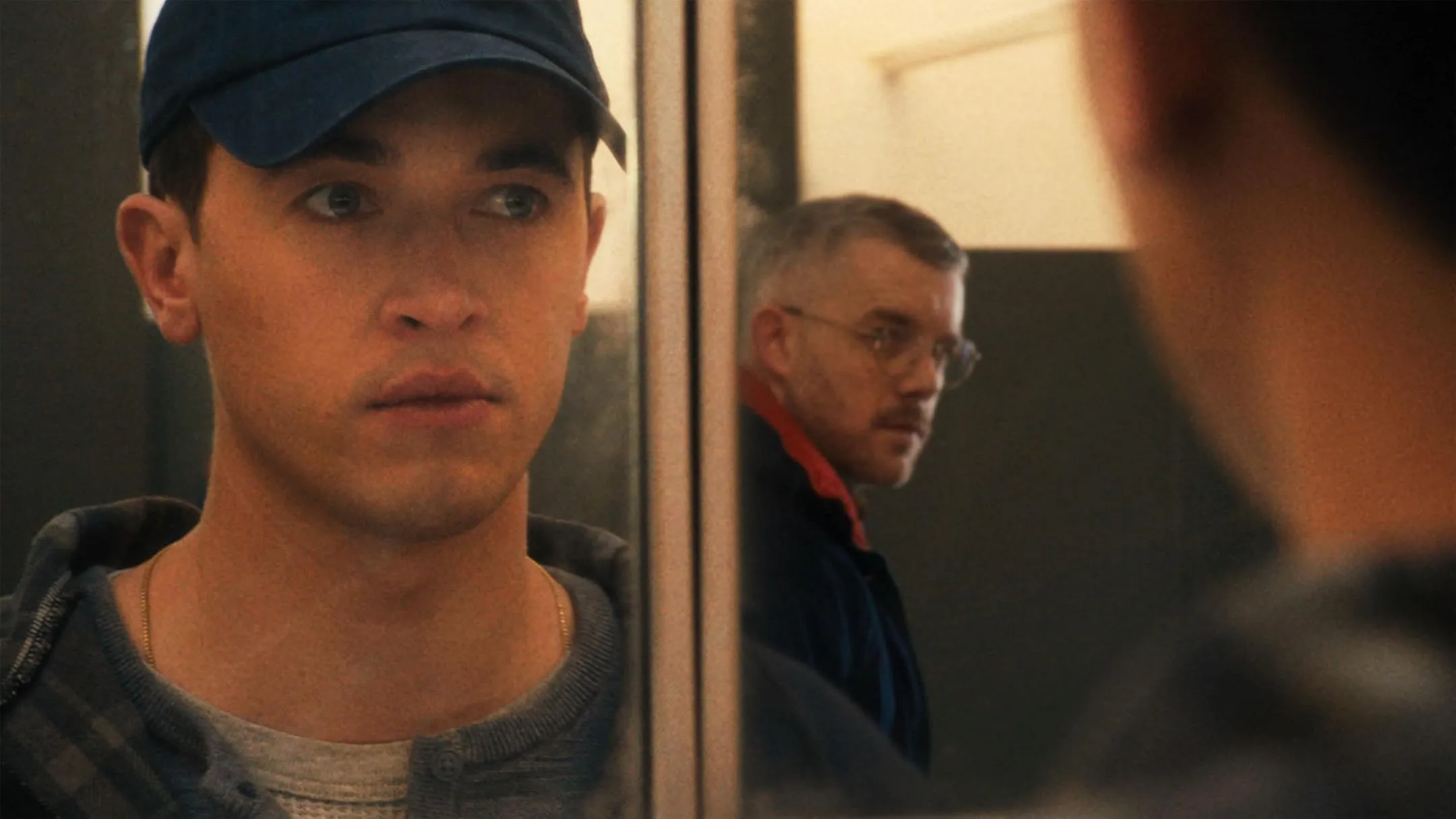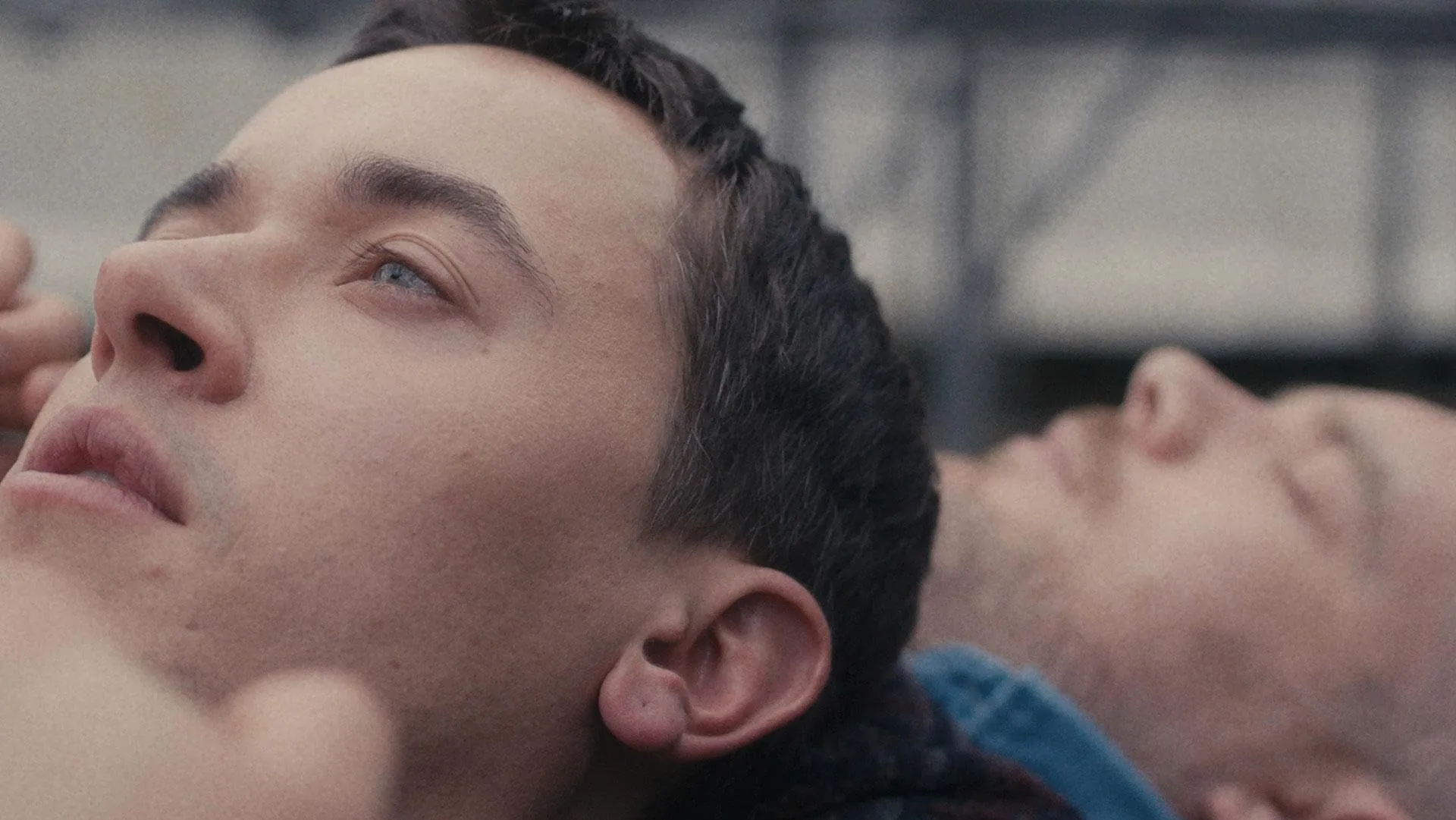“Plainclothes,” the first film by Carmen Emmi, explores the complex landscape of 1997 America, capturing the tensions surrounding LGBTQ+ identity and societal constraints.
The story centers on Lucas, a young undercover officer who struggles with the ethical dilemmas of his entrapment work while exploring his own sexual identity. Inside a suburban shopping mall, Lucas targets gay men, existing in a space where personal desire conflicts with professional expectations.
Emmi crafts a compelling narrative that reveals hidden emotional territories. Her use of VHS-style footage provides a raw visual language, reflecting Lucas’s internal conflict and the surveillance culture of the time.
The film creates a stark portrayal of personal and institutional pressures, inviting viewers to examine the historical experiences of LGBTQ+ individuals and the persistent challenges of social acceptance.
The Interplay of Memory and Reality in “Plainclothes”
Carmen Emmi’s “Plainclothes” uses a non-linear structure that moves between current pressures and scattered memories, exploring Lucas’s complex inner world.
The film’s approach to flashbacks creates portals into the 1990s, revealing the emotional landscape of LGBTQ+ experiences through grainy visual memories. This narrative technique exposes the deeply personal struggle of a character caught between societal expectations and personal truth.
The story unfolds within a suburban shopping mall, where Lucas works undercover. An unexpected encounter with Andrew—an older man who disrupts Lucas’s professional demeanor—sparks a transformative connection. Their initial meeting in the restroom crackles with unspoken tension, becoming the starting point of a relationship that challenges Lucas’s carefully constructed exterior.
As their connection deepens, Lucas confronts the intricate emotional terrain of hidden desire. The relationship becomes a charged exploration of identity, revealing the psychological weight of suppressed feelings. Each moment between Lucas and Andrew peels back layers of personal constraint, highlighting the risks inherent in seeking genuine connection within a restrictive social environment.
The narrative moves through moments of exhilaration and anxiety, tracking Lucas’s journey from professional detachment to a raw, vulnerable state of self-discovery. Their interactions expose the complex interplay between personal longing and societal judgment, creating a nuanced portrait of individual experience against a backdrop of systemic constraint.
A Fractured Mirror: The Duality of Lucas and Andrew in “Plainclothes”
Lucas, the protagonist of “Plainclothes,” captures the emotional landscape of a generation grappling with identity constraints. As an undercover cop, he inhabits a world of internal conflict—his professional role constantly clashing with his personal truth.
Tom Blyth’s performance reveals a character caught between external expectations and internal desires, with subtle physical movements that communicate deep psychological tension.
The narrative intensifies when Lucas meets Andrew, a pivotal encounter that disrupts his carefully constructed emotional barriers. Andrew emerges as a complex figure who challenges Lucas’s understanding of himself, introducing both vulnerability and risk. Their connection becomes a charged exploration of unexpressed longings, with each interaction revealing layers of unspoken emotional complexity.
Their relationship unfolds as a delicate dance of attraction and hesitation. Lucas’s initial caution gradually gives way to a more profound engagement, while Andrew represents an alternative perspective on personal freedom. The dynamic between them exposes the intricate challenges of seeking genuine connection within restrictive social environments, highlighting the psychological burden of concealing one’s authentic self.
The Weight of Silence: Themes of Identity and Repression in “Plainclothes”
“Plainclothes” delves deep into sexual identity through Lucas’s challenging path toward understanding himself. The story explores the complex pressures surrounding Lucas: family demands, work constraints, and the constant threat of social rejection.
Lucas experiences profound internal conflict as his professional exterior clashes with his genuine self. Each interaction becomes a critical moment of self-reflection, revealing the profound emotional landscape of someone struggling to embrace their true identity.
The film exposes the harsh realities faced by LGBTQ+ individuals during the 1990s, depicting a world where queer experiences were criminalized and marginalized. Lucas’s role as an undercover enforcer reveals the systemic oppression prevalent during this period. Surveillance and societal control permeate the narrative, highlighting the risks encountered by those who deviate from established norms.
Emmi’s portrayal captures the nuanced experience of living between societal expectations and personal truth. The story speaks to the ongoing challenges of identity, demonstrating how historical repression continues to impact contemporary queer experiences. Lucas’s journey becomes a powerful exploration of individual resilience against systemic prejudice.
Fractured Reflections: Visual Aesthetics and Cinematic Choices in “Plainclothes”
Carmen Emmi’s “Plainclothes” explores memory and repression through a distinctive use of VHS footage. The stylistic choice goes beyond nostalgia, functioning as a cinematic tool that reveals the fractured inner world of protagonist Lucas.
Grainy, distorted images capture the rawness of hidden memories while highlighting the historical context of LGBTQ+ experiences. These glimpses into the past articulate the complex relationship between lived experience and recollection, exposing the emotional complexity of self-suppression.
Emmi creates an atmosphere of unease by contrasting present-day scenes with weathered analog clips, illustrating Lucas’s internal conflict between professional facades and personal truths.
The film’s soundscape further deepens its emotional landscape. Ambient sounds from the ’90s—distant conversations, intersecting footsteps, and fluorescent light buzzing—create a textured auditory experience. These sonic elements underscore themes of surveillance and constraint, capturing the restrictive environment Lucas experiences.
The musical score builds intensity, synchronizing with Lucas’s emotional state and pulling viewers into his psychological terrain. Sound becomes more than background, emerging as a narrative element that amplifies the film’s exploration of identity, visibility, and the profound human desire for genuine acceptance.
Unveiling Vulnerability: Emotional Depth in “Plainclothes”
In “Plainclothes,” Tom Blyth delivers a remarkable performance as Lucas, revealing the profound emotional complexity of his character. Blyth portrays Lucas with extraordinary depth, using subtle gestures and expressive eyes to communicate internal struggle. His performance captures the tension between professional duty and personal desire, creating a raw and vulnerable portrayal.
Each interaction exposes Lucas’s fragile emotional landscape. Blyth masterfully transitions from a controlled professional to a man grappling with intense personal feelings. His nuanced approach invites viewers to experience Lucas’s internal conflict, presenting a character torn between societal expectations and authentic self-expression.
Russell Tovey complements Blyth’s performance as Andrew, bringing a restrained intensity to his role. Tovey crafts a character marked by quiet resilience and hidden emotional depths. Their shared scenes pulse with unspoken tension, creating a powerful connection that transcends words.
The actors create a dynamic that speaks to the challenges of forbidden connection. Their interactions reveal the intricate emotional terrain of love constrained by external pressures. Through their performances, the film explores themes of identity, suppression, and the human need for genuine emotional connection.
Echoes of the Past: Social Commentary in “Plainclothes”
“Plainclothes” explores LGBTQ+ rights through a nuanced lens, depicting the complex experiences of individuals during the 1990s. The film captures the tension between societal expectations and personal identity, presenting a raw portrayal of struggles faced by LGBTQ+ individuals. Lucas’s journey and his relationship with Andrew reveal the deep emotional landscape of navigating personal truth amid external pressures.
The narrative exposes the intricate dynamics of acceptance, fear, and self-discovery. By presenting characters grappling with their authentic selves, the film illuminates the personal cost of societal constraints. Lucas’s internal conflict becomes a powerful metaphor for the broader challenges of LGBTQ+ experiences, challenging viewers to confront systemic prejudices and understand the human stories behind historical marginalization.
Through intimate storytelling, “Plainclothes” creates a compelling exploration of personal courage and vulnerability, inviting audiences to empathize with the characters’ experiences and recognize the ongoing complexities of identity and belonging.
The Review
Plainclothes
Carmen Emmi's directorial debut "Plainclothes" presents a raw and intimate portrayal of personal identity amid social constraints. The film explores the intricate emotional landscape of characters navigating prejudice and self-discovery. Tom Blyth and Russell Tovey deliver compelling performances that bring depth and nuance to the story's exploration of love and resistance. Through carefully crafted visual storytelling, the movie illuminates the challenges faced by individuals seeking authenticity in a restrictive environment. Emmi's work speaks to the ongoing experiences of marginalized communities, creating a powerful cinematic experience that connects past struggles with present-day realities.
PROS
- Tom Blyth and Russell Tovey deliver emotionally rich portrayals that bring depth to their characters.
- Carmen Emmi’s directorial style effectively balances tense narrative and introspection through innovative visual techniques.
- The film explores important themes of identity, repression, and the search for acceptance within a historical context.
- The use of VHS footage and atmospheric sound design enhances the emotional stakes and authenticity of the story.
CONS
- Some viewers may find the narrative slow in parts, particularly in developing the initial setup.
- The non-linear storytelling might be disorienting for audiences seeking a straightforward narrative.



















































